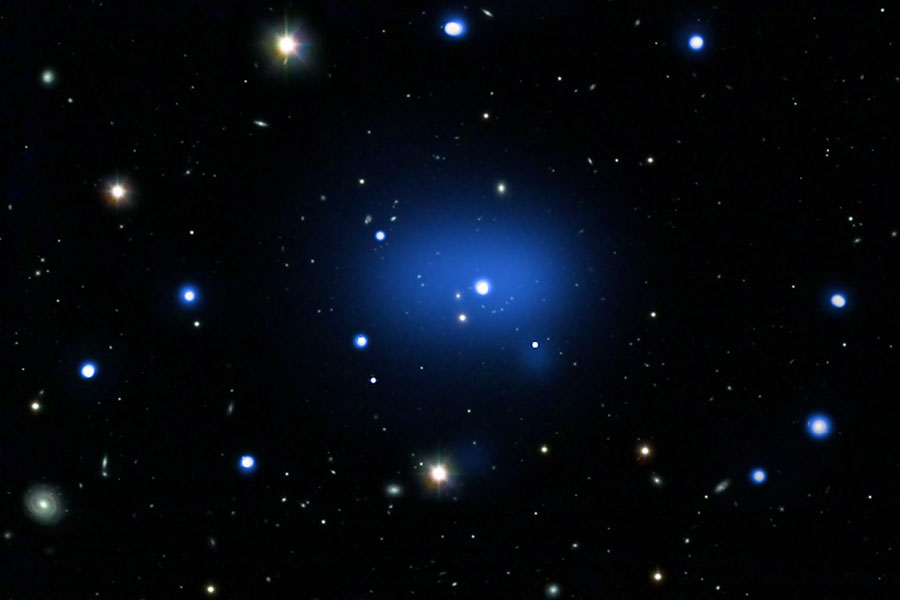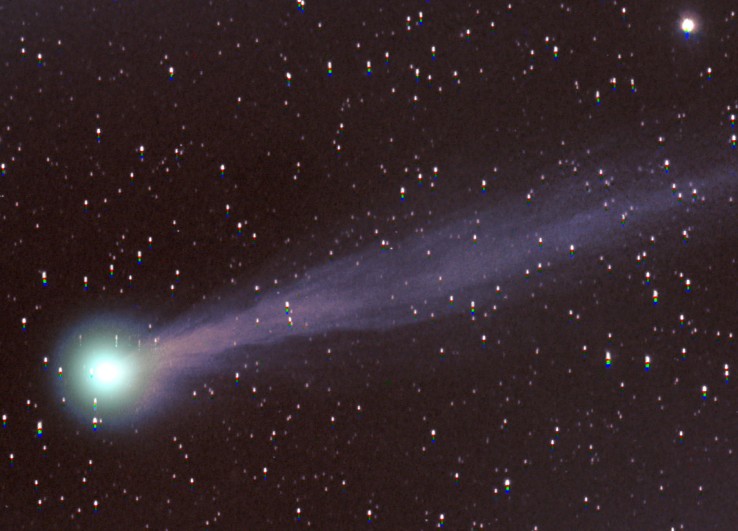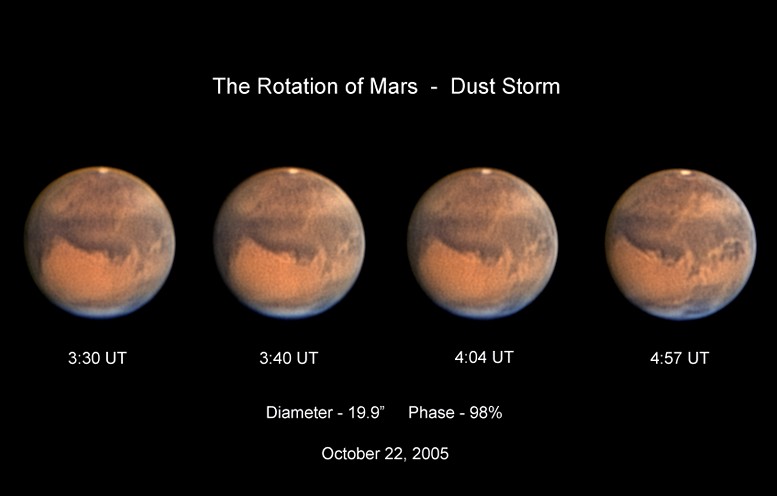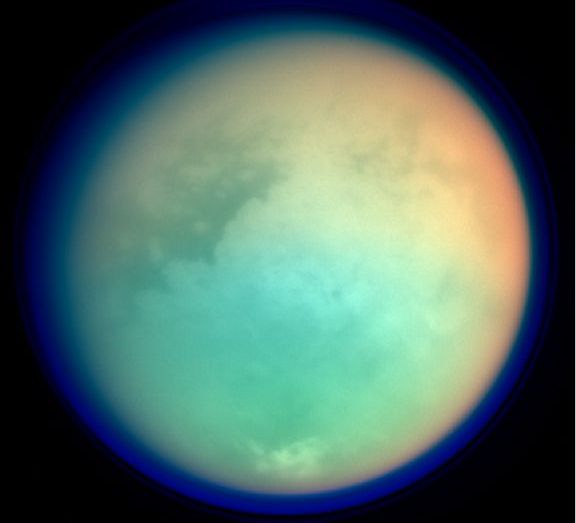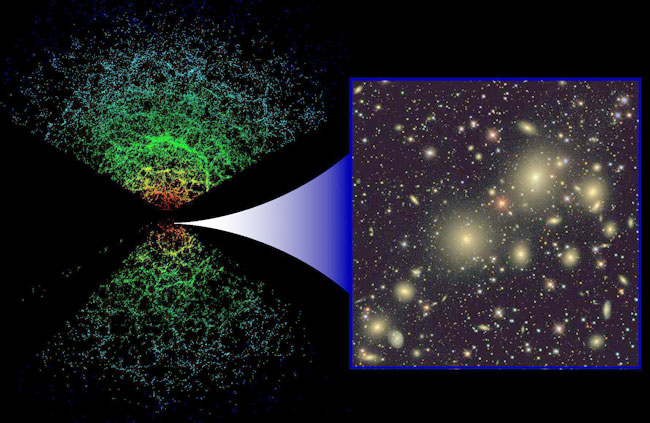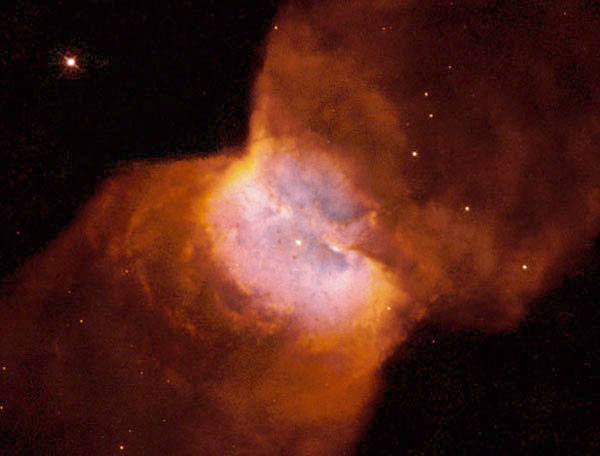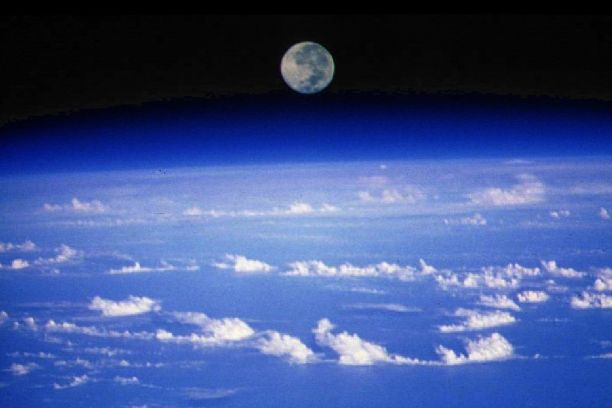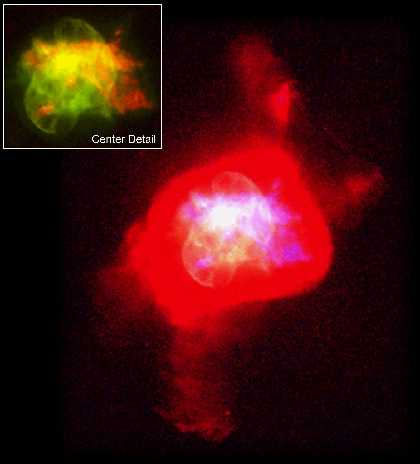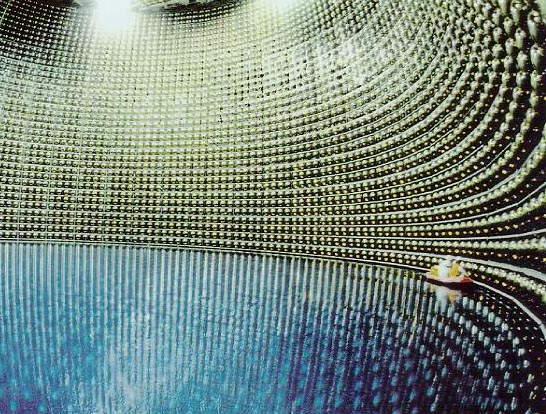| << Previous | Index | Next >> |
2014
[imghover6=http://apod.nasa.gov/apod/image/1410/Re ... l_1080.jpg]http://apod.nasa.gov/apod/image/1410/Re ... d_1080.jpg[/imghover6]Credit & Copyright: Tunç Tezel (TWAN)
2013 Was there ever another comet like ISON? Although no two comets are exactly alike, one that appears to have had notable similarities was Comet Kirch, the Great Comet of 1680. Like approaching Comet ISON, Comet Kirch was a bright sungrazer, making a very close approach to the surface of the Sun. Neither comet, coincidently, is a member of the most common group of sungrazers -- the Kreutz group -- populated by remnants of a comet that disintegrated near the Sun hundreds of years ago. The long tail of Comet Kirch is depicted in the above painting by Lieve Versheier. As pictured, some members of the foreground crowd of Rotterdam in the Netherlands are holding cross-staffs, an angle measuring device that predated the sextant. No one knows how Comet ISON will develop, but like Comet Kirch, it is expected to be brightest when very near the Sun, in ISON's case during last few days of November.
2912 This moon is doomed. Mars, the red planet named for the Roman god of war, has two tiny moons, Phobos and Deimos, whose names are derived from the Greek for Fear and Panic. These martian moons may well be captured asteroids originating in the main asteroid belt between Mars and Jupiter or perhaps from even more distant reaches of the Solar System. The larger moon, Phobos, is indeed seen to be a cratered, asteroid-like object in this stunning color image from the Mars Reconnaissance Orbiter, recorded at a resolution of about seven meters per pixel. But Phobos orbits so close to Mars - about 5,800 kilometers above the surface compared to 400,000 kilometers for our Moon - that gravitational tidal forces are dragging it down. In 100 million years or so Phobos will likely be shattered by stress caused by the relentless tidal forces, the debris forming a decaying ring around Mars.
2011 As northern hemisphere nights grow longer, October is a good month for spotting auroras, or even other eerie apparitions after dark. And this week the night sky did not disappoint. On October 24th a solar coronal mass ejection impacted planet Earth's magnetosphere triggering far ranging auroral displays. On that night, this dramatic silhouette against deep red and beautiful green curtains of shimmering light was captured near Whitby, Ontario, Canada. But auroras were reported even farther south, in US states like Alabama, Kansas, and Oklahoma at latitudes rarely haunted by the northern lights. Well above 100 kilometers, at the highest altitudes infused by the auroral glow, the red color comes from the excitation of oxygen atoms.
2010 As far as ghosts go, Mirach's Ghost isn't really that scary. In fact, Mirach's Ghost is just a faint, fuzzy galaxy, well known to astronomers, that happens to be seen nearly along the line-of-sight to Mirach, a bright star. Centered in this star field, Mirach is also called Beta Andromedae. About 200 light-years distant, Mirach is a red giant star, cooler than the Sun but much larger and so intrinsically much brighter than our parent star. In most telescopic views, glare and diffraction spikes tend to hide things that lie near Mirach and make the faint, fuzzy galaxy look like a ghostly internal reflection of the almost overwhelming starlight. Still, appearing in this sharp image just above and to the right of Mirach, Mirach's Ghost is cataloged as galaxy NGC 404 and is estimated to be some 10 million light-years away.
2009 What if we could see back to the beginning of the universe? We can -- since it takes the age of the universe for light to cross the universe. Peering at distant objects, therefore, tells us about how the universe used to be, even near its beginning. Since telescopes are therefore also time portals, observations of distant clusters can be used, for example, to investigate when and how these huge galaxy conglomerations formed. Previously, the redshift record for a galaxy cluster was about 1.5, corresponding to about nine billion light years distant. Recently, using data including X-ray images from the orbiting Chandra X-Ray Observatory, a new farthest cluster was identified. Shown above, JKCS041 is seen at redshift 1.9, corresponding to nearly one billion light years farther than the previous record holder. The hot X-ray gas that confirmed the apparent galaxy grouping as a true cluster of galaxies is shown above in diffuse blue, superposed on an optical image showing many foreground stars. JKCS041 is seen today as it appeared at only one quarter of the present age of the universe.
2008 The North America Nebula in the sky can do what most North Americans on Earth cannot -- form stars. Specifically, in analogy to the Earth-confined continent, the bright part that appears as Central America and Mexico is actually a hot bed of gas, dust, and newly formed stars known as the Cygnus Wall. This beautiful skyscape shows the star forming wall lit and eroded by bright young stars, and partly hidden by the dark dust they have created. The North America Nebula (NGC 7000) spans about 50 light years and lies about 1,500 light years away toward the constellation of the Swan (Cygnus).
2007 Sometimes it's night on the ground but day in the air. As the Earth rotates to eclipse the Sun, sunset rises up from the ground. Therefore, at sunset on the ground, sunlight still shines on clouds above. Under usual circumstances, a pretty sunset might be visible, but unusual noctilucent clouds float so high up they can be seen well after dark. Pictured above last month, a network of noctilucent clouds cast a colorful but eerie glow after dusk near Vallentuna, Sweden. Although noctilucent clouds are thought to be composed of small ice-coated particles, much remains unknown about them. Satellites launched to help study these clouds includes Sweden's Odin and NASA's AIM. Recent evidence indicates that at least some noctilucent clouds result from freezing water exhaust from Space Shuttles.
2006 Near its closest approach to planet Earth, comet SWAN (C/2006 M4) brightened unexpectedly earlier this week, becoming visible to naked-eye observers under dark night skies. Telescopic observers also noticed dramatic changes in the comet's colorful coma and tail, seen in this view recorded on October 25th. To make the picture, images totaling eight minutes in exposure time were stacked and centered on the comet as it moved relatively quickly against the background star field. The picture covers about 1 degree on the sky. Northern hemisphere observers should still find the comet an easy binocular target in the early evening, even though moonlight will increase the overall sky brightness in the next few days. Look toward the northwestern horizon and the constellation Hercules.
2005 This October, Mars has become a bright, yellowish star in planet Earth's sky as it approaches oppositon, the period when Mars and Earth pass close as they orbit the Sun. How close is Mars? A mere 70 million kilometers or so, close enough to allow Earth-bound astronomers excellent views of the alluring Red Planet. For example, this series of sharp Mars images follows the development of a dust storm as the planet rotates from right to left. The telescopic views clearly show details of the martian surface, including the planet's southern ice cap (top) and hood of clouds over the north pole at the bottom edge. The dust storm itself is visible as a light yellowish band across an otherwise dark region in the southern hemisphere. Even if a telescope isn't handy, be sure to check out Mars soon. It will continue to shine brightly in the night over the coming days.
2004 Normally hidden by a thick, hazy atmosphere, tantalizing features on Titan's surface appear in this false-color view. The image was recorded as the Cassini spacecraft approached its first close flyby of Saturn's smog-shrouded moon on October 26. Here, red and green colors represent specific infrared wavelengths absorbed by Titan's atmospheric methane while bright and dark surface areas are revealed in a more penetrating infrared band. Ultraviolet data showing the extensive upper atmosphere and haze layers are seen as blue. Sprawling across the 5,000 kilometer wide moon, the bright continent-sized feature known as Xanadu is near picture center, bordered at the left by contrasting dark terrain. Saturn orbiter Cassini and Titan lander Huygens plan further explorations, but for now the origin and nature of Titan's surface features remain unknown.
2003 The latest map of the cosmos again indicates that dark matter and dark energy dominate our universe. The Sloan Digital Sky Survey (SDSS) is on its way to measuring the distances to over one million galaxies. Galaxies first identified on 2D images, like the one shown above on the right, have their distances measured to create the 3D map. The SDSS currently reports 3D information for over 200,000 galaxies, now rivaling the 3D galaxy-count of the Two-Degree Field sky map. The latest SDSS map, shown above on the left, could only show the galaxy distribution it does if the universe was composed and evolved a certain way. After trying to match many candidate universes to it, the Cinderella universe that best fits the above map has 5% atoms, 25% dark matter, and 70% dark energy. Such a universe was previously postulated because its rapid recent expansion can explain why distant supernovas are so dim, and its early evolution can explain the spot distribution on the very distant cosmic microwave background.
2002 What on Earth is that? The Richat Structure in the Sahara Desert of Mauritania is easily visible from space because it is nearly 50 kilometers across. Once thought to be an impact crater, the Richat Structure's flat middle and lack of shock-altered rock indicates otherwise. The possibility that the Richat Structure was formed by a volcanic eruption also seems improbable because of the lack of a dome of igneous or volcanic rock. Rather, the layered sedimentary rock of the Richat structure is now thought by many to have been caused by uplifted rock sculpted by erosion. The above image was captured last year by the orbiting Landsat 7 satellite. Why the Richat Structure is nearly circular remains a mystery.
2001
2000 During the Astro-1 astronomy mission of December, 1990, Space Shuttle astronauts photographed this stunning view of the setting full moon above the Earth's limb. In the foreground, towering clouds of condensing water vapor mark the extent of the troposphere, the lowest layer of the planet's life-sustaining atmosphere. Strongly scattering blue sunlight, the upper atmospheric layer, the stratosphere, fades dramatically to the black background of space. Moon and clouds are strong visual elements of many well known portraits of planet Earth, including Ansel Adams' famous "Moonrise, Hernandez, New Mexico", photographed in 1941.
1999 Spanning over 25,000 light-years, comparable to the distance from the Sun to the center of our own Milky Way galaxy, a cosmic jet seen in X-rays blasts from the center of Centaurus A. Only 10 million light-years away, Centaurus A is a giant elliptical galaxy - the closest active galaxy to Earth. This composite image illustrates the jumble of gas, dust, and stars visible in an optical picture of Cen A superposed on a new image recorded by the orbiting Chandra X-ray Observatory. The X-ray data is shown in red. Present theories hold that the X-ray bright jet is caused by electrons driven to extremely high energies over enormous distances. The jet's power source is likely to be a black hole with about 10 million times the mass of the Sun coincident with the X-ray bright spot at the galaxy's center. Amazingly, while some material in the vicinity of the black hole falls in, some material is blasted outward in energetic jets. Details of this cosmic power generator can be explored with the Chandra X-ray data.
1998 A Turtle in Space? Planetary nebula NGC 6210 may look like a giant space turtle, but it is actually much more massive and violent. Fortunately, this gas cloud in Hercules lies about 6500 light years away. NGC 6210 was investigated with the Hubble Space Telescope because it showed evidence of unusual relative abundances of nebular gas. The resulting detailed representative-color picture, above, shows jets of hot gas streaming through holes in an older, cooler shell of gas. The central star that created the planetary nebula is clearly visible in the center of the inset image. Analyses of data involving this recently released picture may help explain the origin of chemical abundances in this nebula and our Galaxy.
1997 Where have all the neutrinos gone? A long time passing since this question was first asked (decades) as increasingly larger and more diverse detectors sensitive to neutrinos from our Sun have found fewer than expected. But why? Above, scientists check the equipment surrounding a huge tank of extremely pure water from the Super-Kamiokande experiment in Japan, designed to detect colliding neutrinos. Large detectors are needed because the neutrino is an elementary particle that goes right through practically everything. Reasons for the lack of solar neutrinos may include a more complex theory for electroweak interactions than currently in use. Future results from detectors like Super-Kamiokande may help us know more.
1996 Today's weather on Neptune will be typical. Highs in the upper atmosphere will be about -150 Centigrade, with winds ranging about 900 miles per hour near the equator. Much was learned recently about Neptune's weather by the release last week of time-lapse pictures of the most distant gas giant in our Solar System. These pictures show how the weather differs between the two hemispheres of Neptune. The overall blue color of Neptune is caused by methane gas preferentially absorbing red light, while the yellow spots are the highest clouds. It is still not known why Neptune's Great Dark Spot disappeared.
1995 The Delta Clipper experimental rocket or DC-X is intended as a development vehicle to pave the way for a reusable single stage to orbit rocket. Shown here, in an artists conception, it has made several successful test flights since its maiden voyage in August of 1993 - taking off like a rocket, hovering and moving horizontally, and landing tail first on a designated landing pad. The DC-X is actually too heavy and underpowered to achieve orbit, but as part of NASA's Reusable Launch Vehicle Technology Program, lessons learned operating the DC-X may help provide science and industry cheaper access to space.
| << Previous | Index | Next >> |




